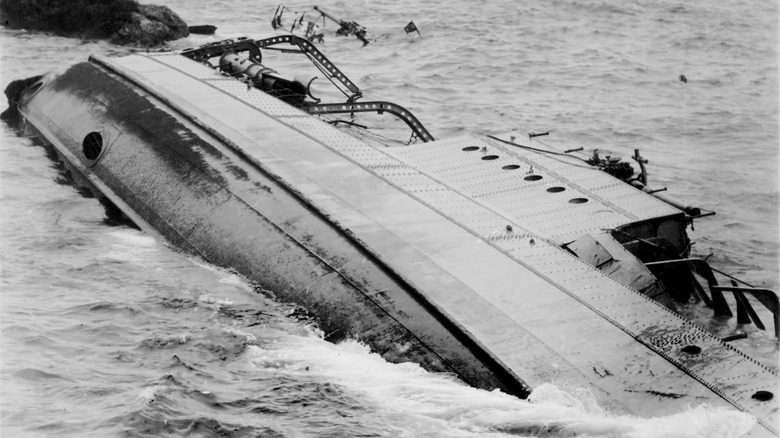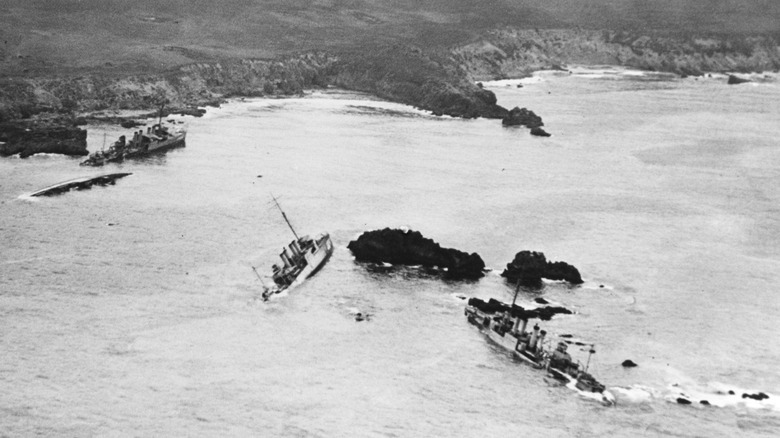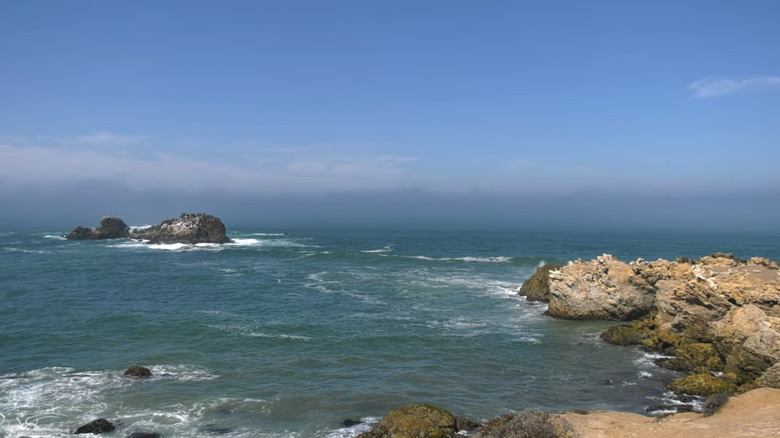What Was The Worst US Navy Accident In Its History?
On the night of Sept. 8, 1923, seven U.S. Navy destroyers ran aground at Honda Point, California. They weren't under attack or in combat. They were conducting a high-speed training exercise along the Pacific Coast. Fourteen Clemson-class destroyers from Destroyer Squadron 11 were steaming in column formation from San Francisco to San Diego, simulating wartime conditions at 20 knots through fog and darkness.
However, a critical navigational error, compounded by the aftermath of a massive Japanese earthquake a week earlier, caused the lead ship, USS Delphy, to turn too early. One wrong move and the entire squadron was barreling toward disaster.
Within minutes, the Delphy slammed into the rocks at full speed, followed by six more destroyers: S.P. Lee, Young, Woodbury, Nicholas, Fuller, and Chauncey. Twenty-three sailors lost their lives, most of them aboard the Young, which capsized after being ripped open on a submerged reef. The cause wasn't enemy action or equipment failure; it was hubris, poor judgment, and overreliance on outdated navigation techniques. Though more lives were lost in the USS Thresher's tragic nuclear submarine explosion in 1963, this peacetime disaster remains the most significant loss of Navy vessels not caused by war.
How poor navigation and earthquake currents triggered the disaster
The squadron relied on dead reckoning: a method ships used to navigate before GPS was invented. Radio navigation existed, but Capt. Edward H. Watson and his flagship's navigator, Lt. Cmdr. Donald Hunter, didn't trust the radio bearings coming in from Point Arguello. Those signals showed the squadron was off course. They ignored them.
Compounding the problem was a freak ocean condition triggered by the Great Kantō Earthquake in Japan just a week earlier. That seismic event had sent strong, unusual currents across the Pacific, which subtly but significantly pushed the ships off their intended path. When Delphy turned east, expecting to enter the Santa Barbara Channel, the squadron was actually miles to its north — directly in line with a known maritime hazard, Honda Point, a stretch of coastline infamous for its jagged, ship-killing rocks, nicknamed the "Devil's Jaw."
The fog was thick. There was no radar. The ships were ordered to maintain a tight formation and full speed, simulating wartime conditions (and racing a rival squadron of destroyers). No soundings were taken, which might have revealed how shallow the water was. Within five minutes of turning, chaos unfolded: seven ships were beached or smashed open, two more damaged, and five narrowly escaped by slowing down or disobeying formation orders.
Wreckage, court-martials, and a brutal lesson in accountability
The wreckage was immediate and visible. Local fishermen and ranchers rushed to help stranded sailors. The remaining five destroyers reversed course and joined the rescue effort. Despite the chaos, the Navy salvaged little from the disaster. The ships, some of the most powerful Navy destroyers in the world at the time, were left where they crashed and later sold for scrap.
The court-martial was equally historic. Eleven officers were tried, the largest proceeding in Navy history. Captain Watson accepted full blame. The Navy used the disaster as a turning point in its approach to navigation, training, and responsibility.
Watson's career effectively ended, but he was still praised for taking responsibility rather than passing the blame. His willingness to fall on his sword became a case study in military leadership. The Honda Point disaster is a story about overconfidence, ignored warnings, and the price of pushing too hard, too fast, when conditions say otherwise.


